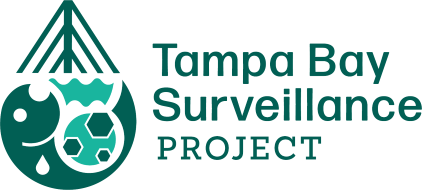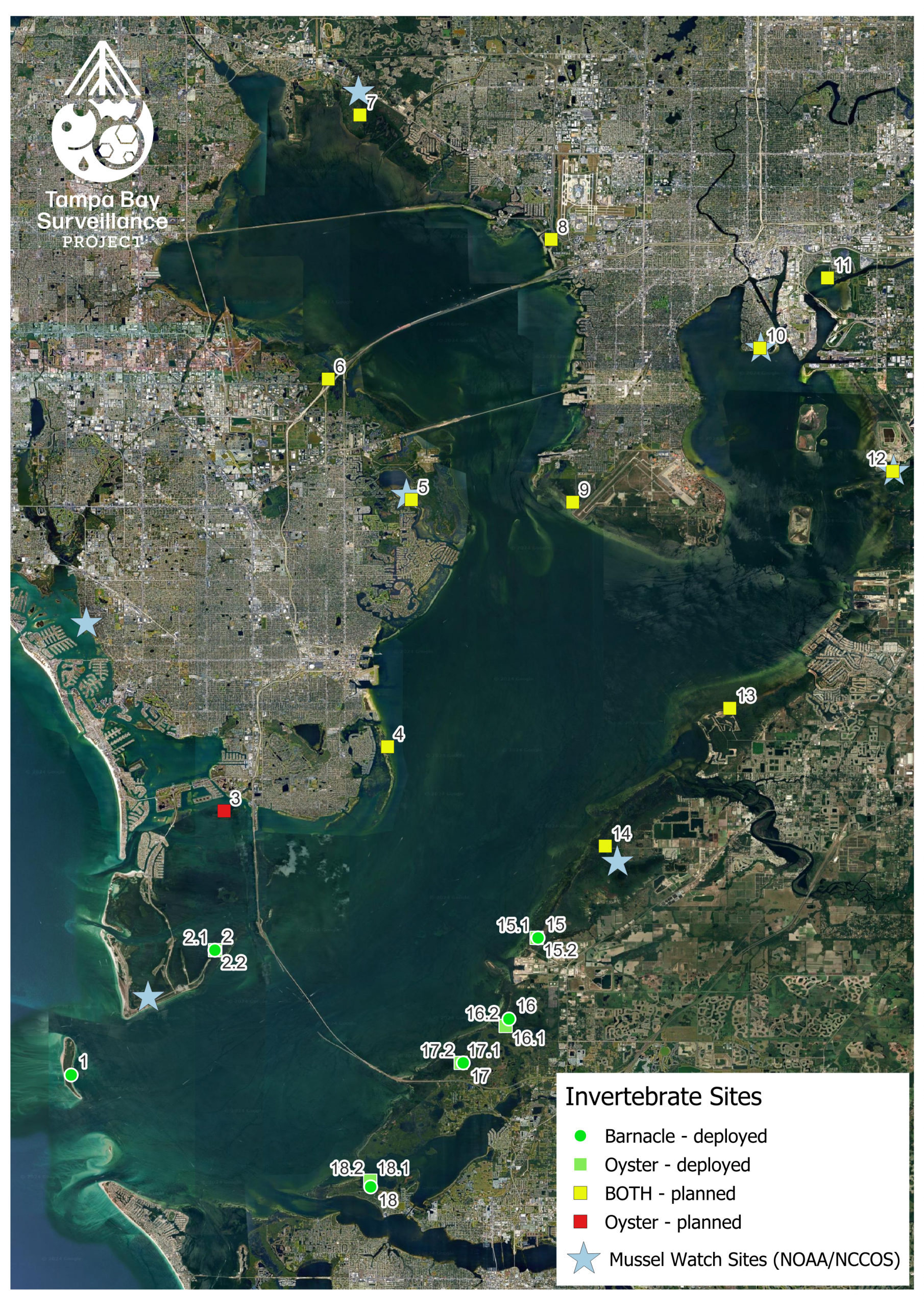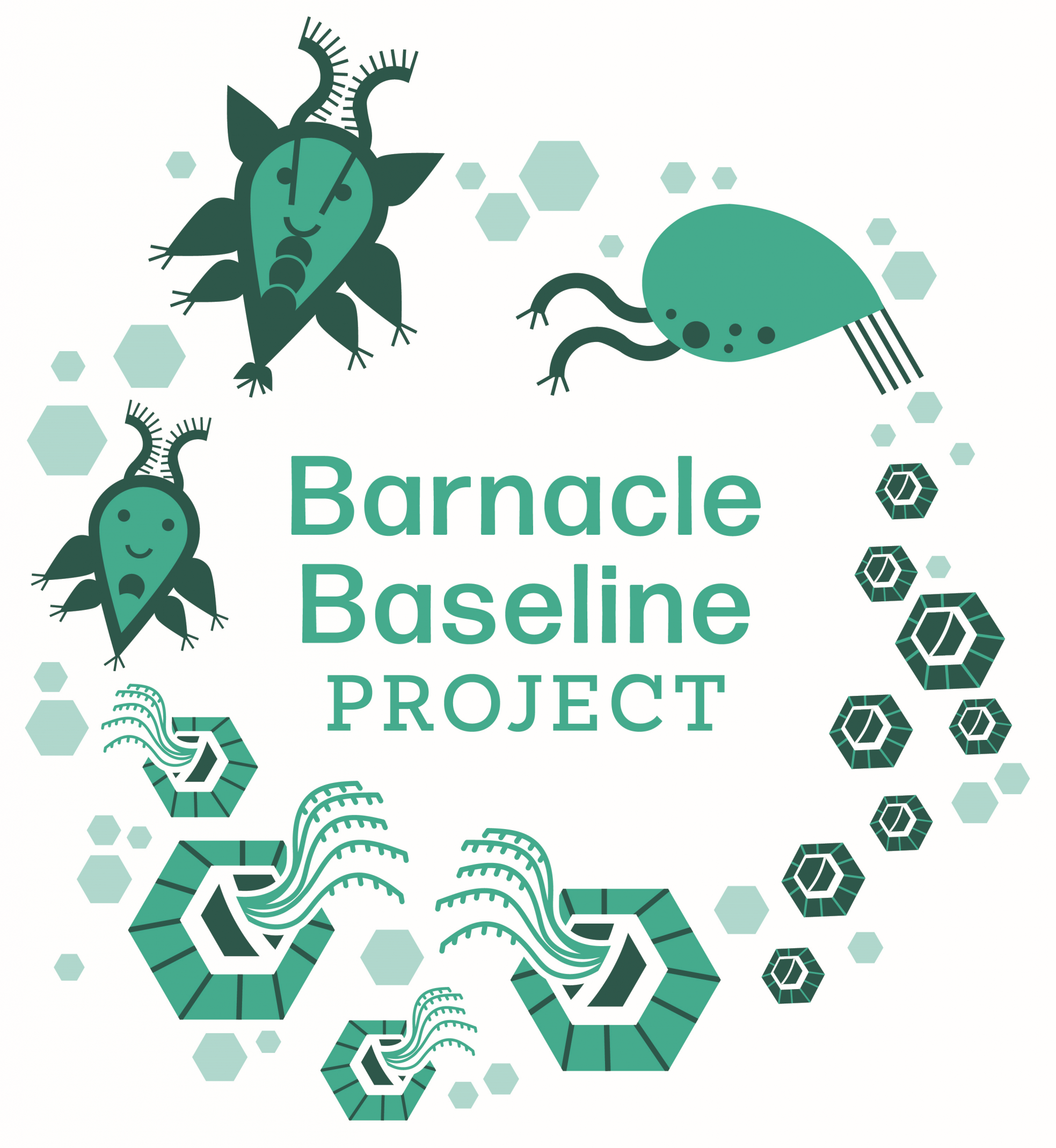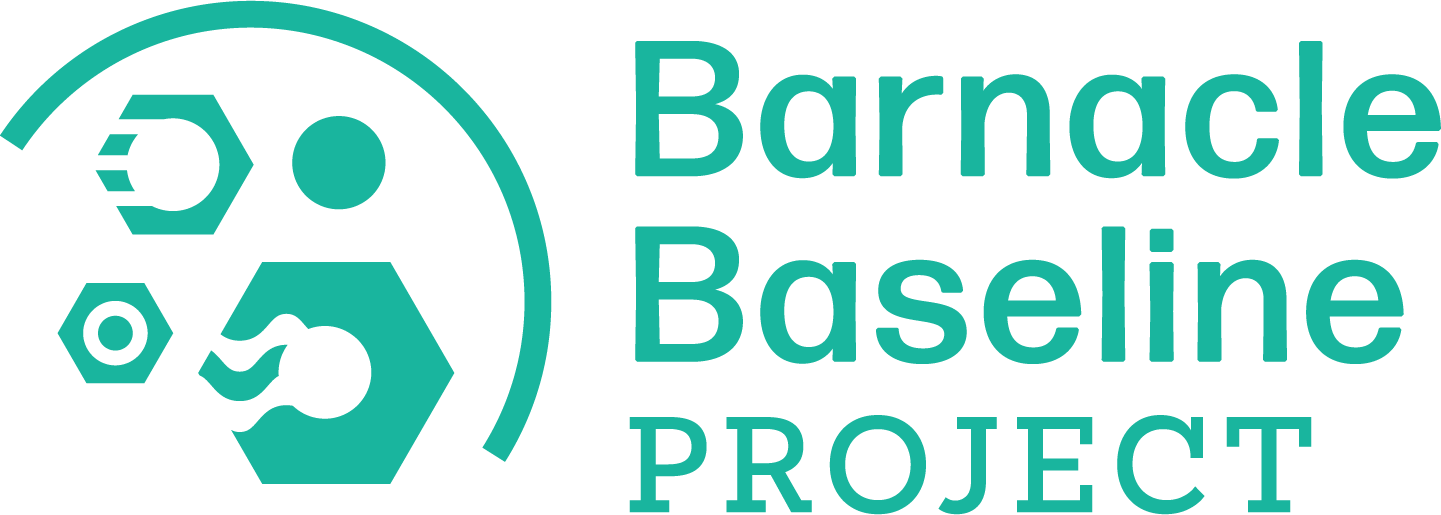
A companion study to the Tampa Bay Surveillance project, the College of Marine Science at the University of South Florida was awarded a project from the S.C. Sea Grant Consortium entitled ‘Does Variability in Coastal Hydrology Affect the Sources and Concentration of CECs in a Large Estuarine System in Florida?‘ which we have named: The Barnacle Baseline Project.
Coastal waters like Tampa Bay are increasingly affected by Contaminants of Emerging Concern (CECs)—pollutants such as pharmaceuticals, PFAS (forever chemicals), flame retardants, and plasticizers. These substances often originate from stormwater runoff, wastewater discharges, and aging infrastructure. As climate change alters rainfall and flooding patterns, the risk of contaminant spread grows. The Barnacle Baseline Project is a two-year study (9/1/2024 to 12/31/2026) using local acorn barnacles (Amphibalanus eburneus and A. amphitrite) as natural sentinels for pollution. These fast-growing, stationary organisms are ideal for tracking pollution in real time. By analyzing their tissues, researchers can trace the sources and concentrations of CECs under various weather and hydrological conditions.
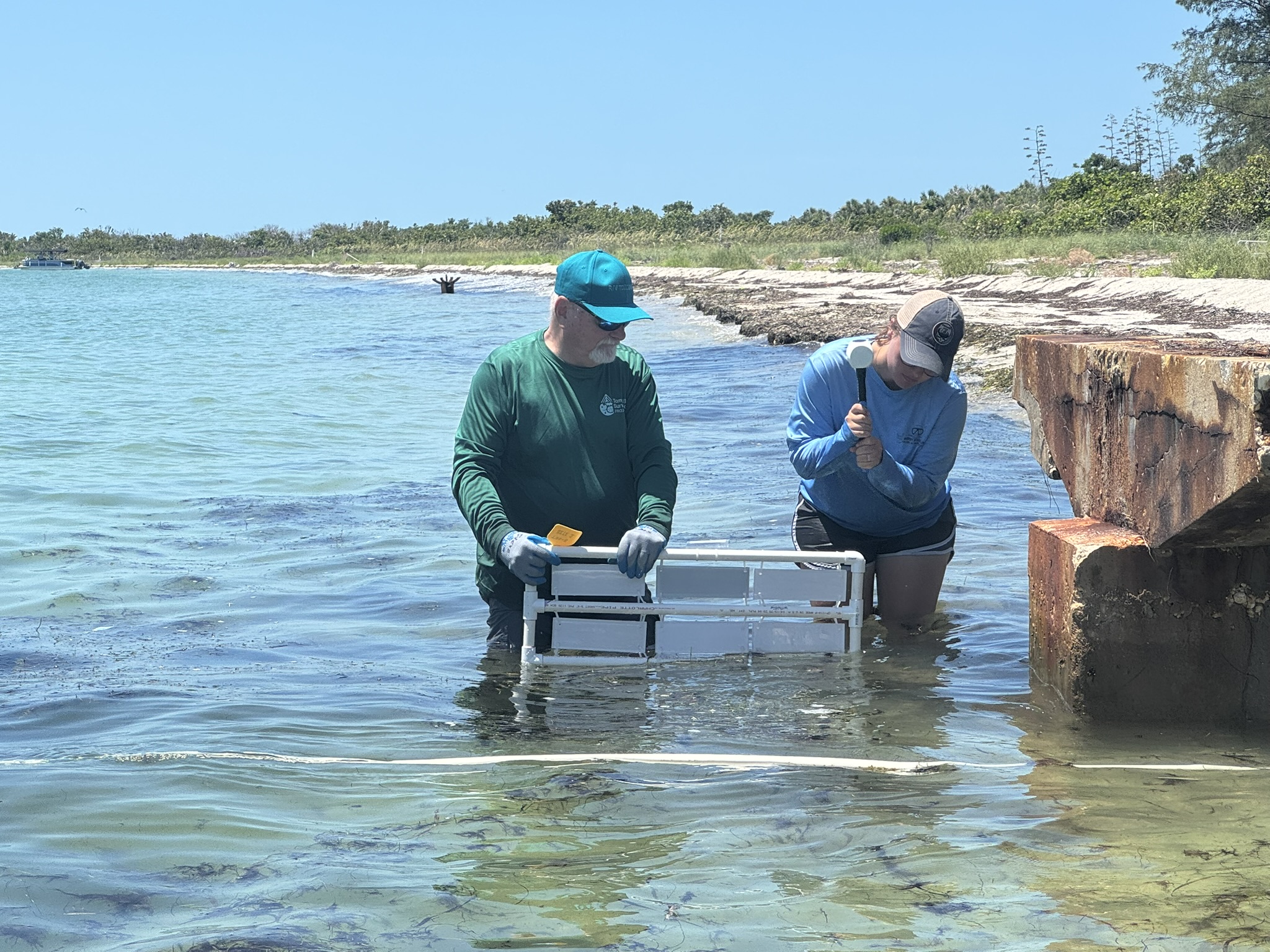
Steve Murawski (Project PI) and Layne Leggett (master's student) deploy a barnacle growth plate array near Egmont Key, FL.
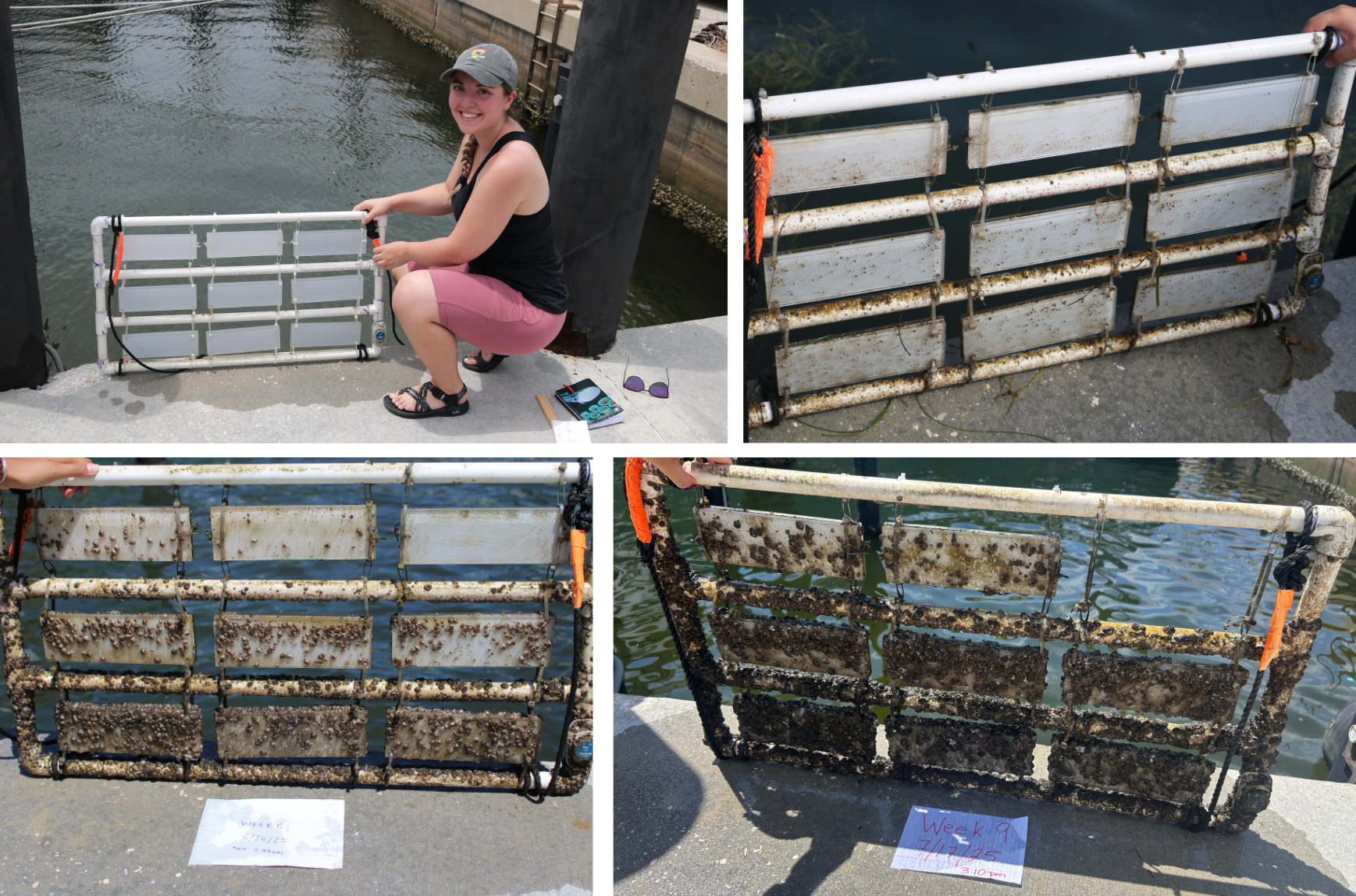
Top (L to R): Master's student Layne Leggett and a test plate array @ Bayboro Harbor, St. Petersburg, FL (Week 1), Week 3. Bottom (L to R): Week 6, Week 9.
During the course of the study, we will:
- Deploy tile arrays near wastewater treatment plants (WWTPs), storm sewer outfalls, and reference sites around Tampa Bay.
- Sample during both dry periods and after heavy rainfall to assess runoff impacts.
- Analyze barnacle tissues for a suite of PFAS and pharmaceutical compounds.
- Use statistical modeling to link pollutant levels to location, storm events, and source type.
The Barnacle Baseline Project aims to better understand how climate-driven changes in rainfall and runoff influence the presence and movement of CECs in coastal waters. By comparing pollution associated with wastewater treatment plants and stormwater systems, the project seeks to identify which sources pose greater risks to benthic organisms and local communities. In addition to scientific research, the project emphasizes public engagement through the development of digital media (e.g. ArcGIS StoryMaps) and collaborations with regional stakeholders.
